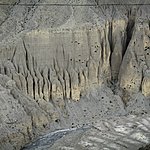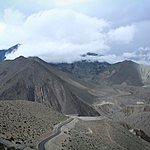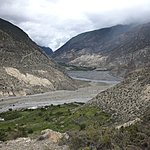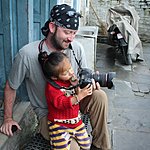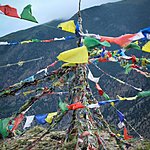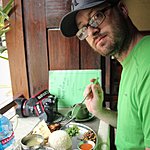
Lower Mustang Trek - 9 Days

Highlights
- Explore the well-preserved Tibetan culture of Upper Mustang
- Visit Muktinath, one of the holiest Hindu pilgrimage sites in Nepal
- Views of the north face of Annapurna and Dhaulagiri
- Fly over the deepest gorge in the world, the Kali Gandaki
- Visit the pre-Buddhist Bon village of Lupra
Brief itinerary
| Day | Highlights | Overnight |
|---|---|---|
| Day 1 | Welcome to Kathmandu! | Kathmandu |
| Day 2 | Explore Kathmandu | Kathmandu |
| Day 3 | Fly from Pokhara to Jomsom (2,720 m) | Jomsom |
| Day 4 | Trek to Kagbeni (2,900 m) | Kagbeni |
| Day 5 | Trek to Jharkot; Visit to Red Gompa (3,519 m) | Jharkot |
| Day 6 | Day trip to Muktinath (3,710 m) | Jharkot |
| Day 7 | Trek to Jomsom via Lupra Valley (2,790) | Jomsom |
| Day 8 | Flight from Jomsom to Kathmandu via Pokhara | Kathmandu |
| Day 9 | Depart Kathmandu |
Detailed Itinerary
Day 1: Welcome to Kathmandu!

As you fly into Kathmandu, you'll have beautiful views over the valley, the Himalaya, and of the terraced fields below. After going through customs, a representative will be waiting to guide you through the initial culture shock of Kathmandu’s narrow, winding streets and get you settled into your hotel. Once you've settled in, head out and visit one of Kathmandu's cultural highlights. In the evening, the tourist hub of Thamel is a good place to grab your first meal, with a variety of restaurants to chose from offering both Western and local Nepali dishes.
Day 2: Morning in Kathmandu - Fly to Pokhara

Kathmandu has a special atmosphere during the early morning hours when the city is slowly coming to life yet not too chaotic. It's a great time to walk and explore the streets or have a chai overlooking one of the local courtyards or durbar squares. After lunch, you'll take a short flight to Pokhara, where you'll spend the night.
Day 3: Flight from Pokhara to Jomsom

After an early breakfast in Pokhara, you'll drive to the airport for a 30-minute flight to Jomsom, the headquarters of Nepal's Mustang district. The flight takes you over the Kali Gandaki, the deepest gorge in the world. From the plane, you'll have great views of Dhaulagiri and Annapurna.
Jomsom is among the very few places in Nepal from where the Himalayan peaks can be admired at such a close range and yet from a safe altitude of only 8,800 feet. Giant peaks like Nilgiri, Tilicho, and Dhaulagiri seem so close you could reach out to touch them.
In Jomsom, you'll feel how much cooler and drier the air is. Today is a day for taking it easy and exploring the charming town of Jomsom and beyond to get a feel for your surroundings. Depending on how you feel, there is a great two-hour walk down the Kali Gandaki Valley to Marpha, home of Thakali people and their famous Marpha apples and apple brandy. You can explore village learning about the traditional design principles, including the flat roofs to dry produce for use in the long winters and the underground drainage system. You can also visit the distillery and sample their wares before returning to Jomsom.
Day 4: Trek to Kagbeni
This morning, you'll trek north to Kagbeni, arriving in time for lunch. The wide trail along the western side of the sandy, saligram-filled riverbed provides views of the nearby peaks of Dhaulagiri, Tukuche, and Nilgiri, and, to the south, the Annapurna Massif.
Kagbeni, spectacularly situated atop a cliff overlooking the confluence of the Kali Gandaki and the Jhong Khola rivers, is the last village in Lower Mustang and guards the entrance into Upper Mustang (visible across the Kali Gandaki riverbed). It is an oasis of green fields amidst rocky, arid mountains, with Niligiri looming beyond. This ancient, partially ruined citadel town is a glimpse into a unique way of life, with its narrow alleyways and tunnels, irrigation canals, green fields of barley and its massive, 800-year-old brick-red Sayka Gompa. You can also wander past the ancient 100-room King’s Palace.
At the police check post at the north end of the village, there is a sign that reads "Restricted area, tourists please do not go beyond this point". This is the trail going up to the famous Lo Manthang, in ‘forbidden’ Upper Mustang.
Day 5: Trek to Jharkot and visit to the red Gompa
You will want to eat a hearty breakfast this morning, as today, the climbing begins. From Kagbeni to Jharkot is approximately 3-4 hours walking, depending on how you are feeling in the dry air and the altitude.
It's an uphill trek from Kagbeni to Jarkhot and you gain quite a bit of elevation, so it’s nice to stop here and take the afternoon to explore this old fortified village. The main feature of the village is the striking red Gompa (monastery) of the Sakya sect of Buddhism that sits prominently at the front of the village. This Gompa is more than 500 years old and has an active Tibetan Medicine school. There are stunning views down the valley and up towards the famous Thorong La (pass) which is the highest point of the Annapurna Circuit trek.
Day 6: Trek to Jharkot via Muktinath

Muktinath is an important pilgrimage site for Buddhists and Hindus, and a great example of a sacred place shared in harmony by followers of two religions. Local Buddhist nuns (belonging to the lineage of Lama Wangyal) caretake the site. Every year, thousands of devotees from India, Tibet, and Nepal come here on pilgrimage for purification and salvation. It is said that throughout history many kings throughout Asia did the same.
It's well worth spending a day here to not only visit this sacred shrine but also to relax and enjoy the beautiful surroundings.
Day 7: Trek to Jomsom via Lupra
You'll descend to Jomsom via Lupra village, visiting a local Bonpo Monastery. While you have to ascend the mountain again for a short way to get back on the trail, it is a great route that trekkers on the Annapurna circuit miss out on, so you will be far away from the crowds and the jeep trail to Jharkot and Muktinath.
Bonpo is an ancient pre-Buddhist religion not represented by many monasteries these days, so it is a rare and special chance to learn about this ancient animist religion while taking a stunning alternate route back to Jomsom.
Day 8: Flight from Jomsom to Kathmandu via Pokhara
After an early breakfast in Jomsom, you'll be transferred to the local airstrip to catch your return flight to Pokhara. From here, you'll catch a connecting flight to Kathmandu.
Once you arrive, you'll be transferred to your hotel in the capital city. Spend the rest of the day on your own, perhaps exploring the streets on foot, bicycle, or rickshaw, and seeing anything you may have missed at the beginning of your trip.
Day 9: Depart Kathmandu

Time to say farewell to Nepal. Enjoy your last moments in Kathmandu with breakfast in a café, a city stroll, and/or souvenir shopping. A representative will meet you at your hotel and drive you to the airport for your return flight home. It's good to be at the airport at least two hours prior to departure.
Overview
| Fast facts | |
|---|---|
| Min. duration | 9 days |
| Max. elevation | 3,710 m (Muktinath) |
| Start/finish | Jomsom |
| Difficulty | Moderate |
| Trek-style | Teahouse |
| Best season | May-Nov |
Nepal’s Mustang region was a semi-autonomous kingdom until 2008, and still retains one of the best-preserved Tibetan Buddhist societies in the world. Flying to Jomsom and then trekking around Lower Mustang—through Kagbeni, Muktinath, Jharkot and Lupra—is an ideal way of getting a taste of fascinating Mustang without needing to pay for the expensive Upper Mustang permit.
Mustang is in the rain shadow of the Himalaya, so the landscape here is arid. Flying from Pokhara takes you through the Kali Gandaki Gorge, the deepest in the world. On the other side, a completely different landscape opens up that is like few other places in Nepal.
Treks around Jomsom reveal Tibetan Buddhist monasteries perched on ridges and cliffs, the holy Hindu pilgrimage site of Muktinath, and the old fortress town of Kagbeni, the frontier between Lower and Upper Mustang. Greenery is sparse and provided only by the irrigated fields around settlements. The unique landscape and culture combine to create a fascinating trekking experience.
Chat with a local specialist who can help organize your trip.
Getting there & away
The preferred method of transportation to Jomsom is a half-hour flight from Pokhara.
Roads built in the last few years have opened up access to Jomsom and the Mustang area. It used to be popular to trek all the way along the Kali Gandaki Gorge to Jomsom (or vice versa) as part of the Annapurna Circuit. Since the completion of the road this is no longer ideal as the road is dusty and trekkers have to share it with vehicles.
As an alternative to flying, you can get a jeep from Pokhara or a bus from Beni (3 hours from Pokhara) all the way to Jomsom. This takes a full day and lowers the transport cost, but be prepared for a bumpy ride.
Permits & regulations
An Annapurna Conservation Area permit ($20) and TIMS card ($10) are required for trekking in and around Jomsom. These can be arranged in Kathmandu or Pokhara.
An extra, expensive permit is required for entry into Upper Mustang, past Kagbeni ($500 for 10 days) (see ‘Variations’ section, below). It is necessary to trek with a guide in Upper Mustang.
Best season
As Jomsom and Mustang are in the rain shadow of the Himalaya and receive little rainfall, this is one of the few places in Nepal that is ideal for trekking in the monsoon months (June to August). However, flights from Pokhara to Jomsom are frequently delayed at this time of year due to bad weather, so best to have a buffer of a couple days on either end to avoid missing any important connections.
Like elsewhere in Nepal, spring (March-May) and fall (September to November) are also good times to go to Jomsom.
Visiting in winter is not advised, as temperatures here get very cold, and many resources (including running water) become scarce in Mustang. Many locals shut their businesses and leave.
What to bring
As well as the usual provisions for a multi-day trek (good boots, a waterproof layer, and many layers of clothing), it’s especially important to carry a face mask/scarf and sunglasses on this trek. Mustang often experiences fierce winds in the late morning and afternoon, which whip up a lot of dust and grit.
Difficulty
The treks around Jomsom are moderately difficult. The highest elevation is Muktinath at 3710 metres, but all nights are spent below 3000 metres. It is suitable for both first-time and repeat visitors to Nepal, though a reasonable level of fitness and good health is required.
Accommodation & meals
The trekking infrastructure in this region is good compared to other parts of Nepal. There is a variety of accommodation in Jomsom and Muktinath, with higher-quality hotels in Jomsom (such as Jomsom Mountain Resort, with an indoor swimming pool) and lodges catering to pilgrims in Muktinath. Teahouses/lodges in this region are usually basic but provide blankets and running water (though not always hot).
Food in teahouses/lodges is generally of a good standard, with plenty of fresh vegetables (when in season), noodles, rice and other healthy and filling dishes available. It is not advisable to travel to Jomsom in winter as many facilities close for the season, making food supplies scarce.
Variations
Continuing into Upper Mustang
Instead of heading east to Muktinath from Kagbeni, you can continue on to Lo Manthang, the capital of Upper Mustang. This adds another 8-10 days to this itinerary. Highlights include exploring the narrow streets of the old city of Lo Manthang and seeing the meditation caves cut into rock faces. Permits for trekking in Upper Mustang cost $500 for 10 days, and trekking must be done with a guide.
Connecting with the Annapurna Circuit
From Muktinath, you can join the Annapurna Circuit by crossing the Thorong La (5416 m), thus joining the circuit in a clockwise direction. The Annapurna Circuit is one of Nepal’s classic treks, but fewer trekkers are making the full circuit these days due to road construction and unpleasant hiking along the dusty road between Beni and Jomsom.
Crossing the Thorong La is very strenuous, and should only be attempted with proper preparation. When crossing from Muktinath (3710 m) the increase in altitude will be rapid, so it is important to make it down to Thorung Phedi (4540 m) the same day. There is often snow at the pass, and weather conditions can change rapidly. Usually, Thorung La is crossed from east to west, given a more gentler climb to the pass.

